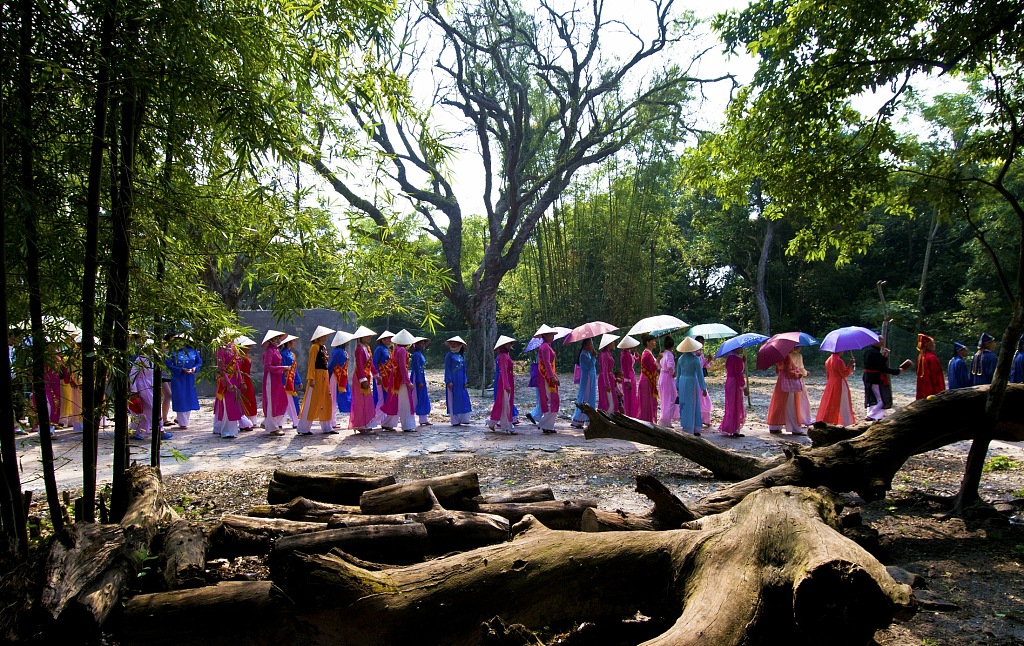
A member of the Jing ethnic minority is seen fishing on stilts in Fangchenggang City, south China's Guangxi Zhuang Autonomous Region. /VCG
A member of the Jing ethnic minority is seen fishing on stilts in Fangchenggang City, south China's Guangxi Zhuang Autonomous Region. /VCG
South China's Guangxi Zhuang Autonomous Region has taken legislative measures to protect the Jing ethnic culture, according to local authorities.
According to a 2010 census, the Jing ethnic minority, mainly living on three islands off the coast of Fangcheng County, has an estimated population of over 28,000. Ancestors of the Jing ethnic groups migrated from Vietnam to today's Guangxi in the late 15th and early 16th centuries.
The Jing people like antiphonal songs which are melodious and lyrical. Their traditional instruments include the two-stringed fiddle, flute, drum, gong and the single-stringed fiddle (Duxianqin), a unique musical instrument of the ethnic group.

A single-stringed musical instrument called Duxianqin. /VCG
A single-stringed musical instrument called Duxianqin. /VCG
The regional legislature has adopted a regulation to protect both tangible and intangible cultural heritages of Jing people, including the single-stringed musical instrument Duxianqin and traditional Ha festival.

Jing people celebrate traditional Ha festival. /VCG
Jing people celebrate traditional Ha festival. /VCG
According to the regulation, the ethnic group's language, literature, folk customs, music, dance and handicraft will be included in the curricula of primary and secondary schools with a considerable number of students of Jing ethnic group. Colleges are encouraged to set up relevant courses to cultivate more talents to pass on the ethnic culture.
The regulation will take effect on November 1.